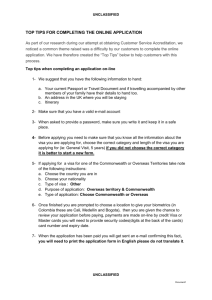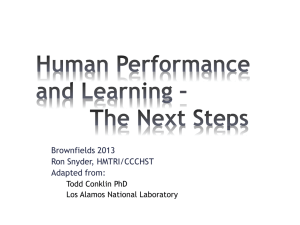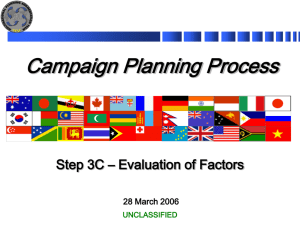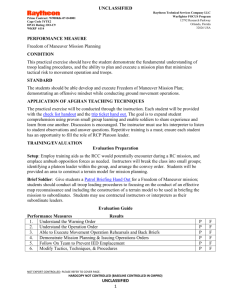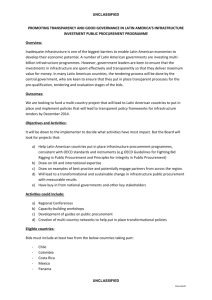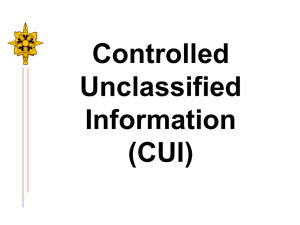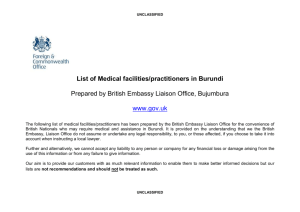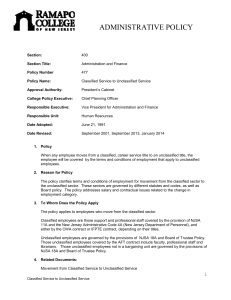1.2. How to complete Concept Bid
advertisement
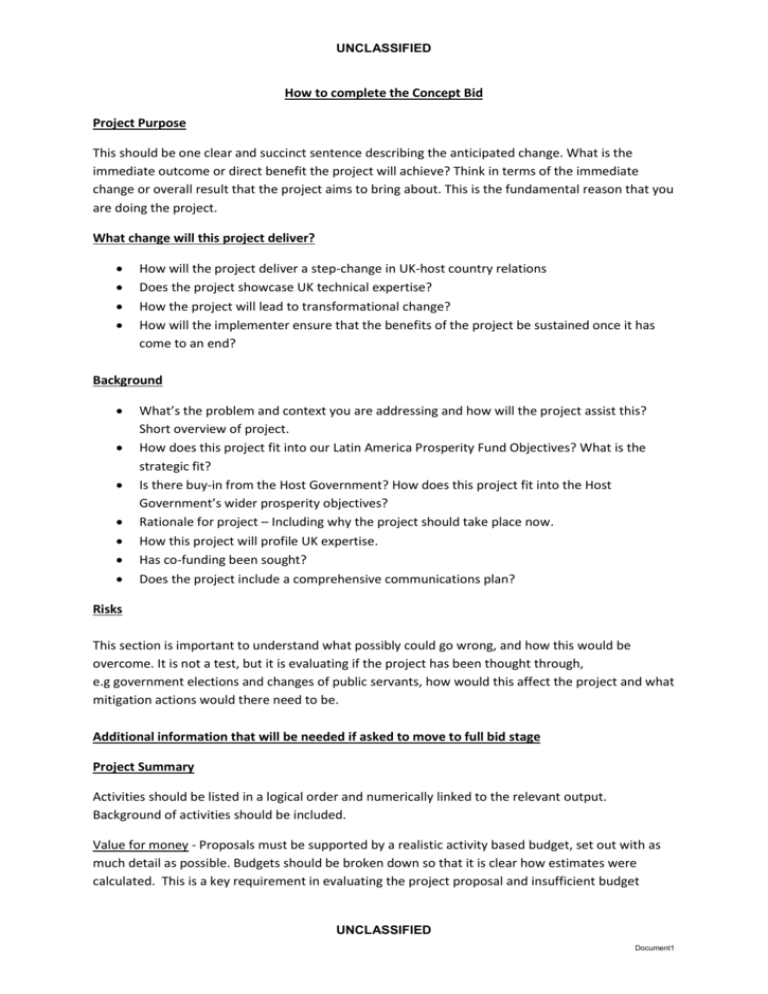
UNCLASSIFIED How to complete the Concept Bid Project Purpose This should be one clear and succinct sentence describing the anticipated change. What is the immediate outcome or direct benefit the project will achieve? Think in terms of the immediate change or overall result that the project aims to bring about. This is the fundamental reason that you are doing the project. What change will this project deliver? How will the project deliver a step-change in UK-host country relations Does the project showcase UK technical expertise? How the project will lead to transformational change? How will the implementer ensure that the benefits of the project be sustained once it has come to an end? Background What’s the problem and context you are addressing and how will the project assist this? Short overview of project. How does this project fit into our Latin America Prosperity Fund Objectives? What is the strategic fit? Is there buy-in from the Host Government? How does this project fit into the Host Government’s wider prosperity objectives? Rationale for project – Including why the project should take place now. How this project will profile UK expertise. Has co-funding been sought? Does the project include a comprehensive communications plan? Risks This section is important to understand what possibly could go wrong, and how this would be overcome. It is not a test, but it is evaluating if the project has been thought through, e.g government elections and changes of public servants, how would this affect the project and what mitigation actions would there need to be. Additional information that will be needed if asked to move to full bid stage Project Summary Activities should be listed in a logical order and numerically linked to the relevant output. Background of activities should be included. Value for money - Proposals must be supported by a realistic activity based budget, set out with as much detail as possible. Budgets should be broken down so that it is clear how estimates were calculated. This is a key requirement in evaluating the project proposal and insufficient budget UNCLASSIFIED Document1 UNCLASSIFIED detail was among the top reasons why projects were rejected in 2012. An example budget is included at Annex A. Evidence of local demand/need – We are particularly interested in funding new or innovative work, which, if successful, could be expanded into a wider project leveraging other funds or be selfsustaining. If relevant, you should set out how the proposal adds value to previous work undertaken. Project viability, including capacity of implementing organisation(s) - Projects should be realistic in the results they aim to deliver and how these will contribute to the long-term achievement of the targets. Project design, including clear, achievable impact - Projects must deliver outputs and outcomes relevant to this Programme’s targets. It is vital that projects that clearly demonstrate how they will address the target areas and deliver impact. Sustainability - To increase the long-term sustainability of projects and their impact, we want to maximise opportunities to support local civil society. This might mean working through a national NGO to deliver a project, or using an international NGO to support the work of a network of local NGOs. When working with international partners, the focus should be on building skills of local partners to continue the work. Risk and stakeholder management – Risks should be identified and a risk management plan put in place. Proposals should demonstrate how they would engage host governments and key stakeholders. Projects that can leverage host government support or engagement are more likely to succeed. However, we will continue to support work that challenges host country views, and we do not believe that change is impossible without host government support. Insufficient budgetary detail, lack of demonstrable impact and unrealistic expectations of what can be completed in the time scale are top reasons why projects are rejected. Please pay particular attention to these areas. Outputs This is a list of all the things delivered directly by the project, the anticipated results. Outputs are what we deliver directly from the activities and should be within the implementer control. In addition you will be asked to list milestones in the project cycle. Activity Based Budget Consider all of the Main Activities and estimate their individual costs. Enter the costs in the months where you expect the activities to be completed. For example, if the project will run 3 workshops include the number of participants and break costs down into key component parts on separate lines in the spreadsheet. Administration costs should not exceed 10% of the total project costs. UNCLASSIFIED Document1 UNCLASSIFIED Annex A – Example of an activity Based budget UNCLASSIFIED Document1
